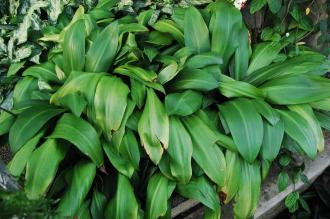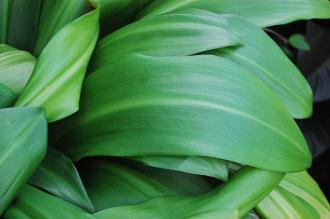
Hymenocallis speciosa (16/01/2016, Kew Gardens, London)
Position: Full sun to light shade
Flowering period: Autumn
Soil: Moist, well drained
Eventual Height: 50cm
Eventual Spread: 50cm
Hardiness: 10b, 11, 12, 13
Family: Amaryllidaceae
Hymenocallis speciosa is an evergreen bulb forming perennial with a clump forming habit. Its dark green leaves are lanceolate with entire margins, up to 50cm long and 10cm across. Its fragrant white/ green flowers appear in terminal umbles in groups of up to 20.
Hymenocallis speciosa, commonly known as Green Tinged Spider Lilly or Spider Lilly, is native to the Windward Islands, in the east Caribbean. Hymenocallis speciosa is synonymous with Pancratium speciosum.
The etymological root of the binomial name Hymenocallis is derived from the Greek umhn meaning ‘thin skin’ and kalli meaning ‘beautiful’. Speciosa is from the Latin meaning ‘spectacular’.
The landscape architect may find Hymenocallis speciosa useful as a specimen houseplant with attractive, fragrant autumn flowers. A clump of bulbs may be grown in a single pot in a light position.

Hymenocallis speciosa Leaf (16/01/2016, Kew Gardens, London)
Ecologically, Hymenocallis speciosa flowers are attractive to pollinating insects.
Hymenocallis speciosa prefers moist, free draining soils. It tolerates most pH of soil.
When maintaining Hymenocallis speciosa as a houseplant its soil should be watered regularly during its growing period. Watering should almost stop during the winter months as the plant is dormant during this period. Its preferred active growing temperature rages from between 21ºc to 29ºc, it will tolerate a temperature of 16ºc during its dormant period. Feeding with weak fertiliser solution should be carried out once a month during the growing season. Aphids and Mealy Bugs and Scale Insect may attack this plant.

Landscape Architecture

